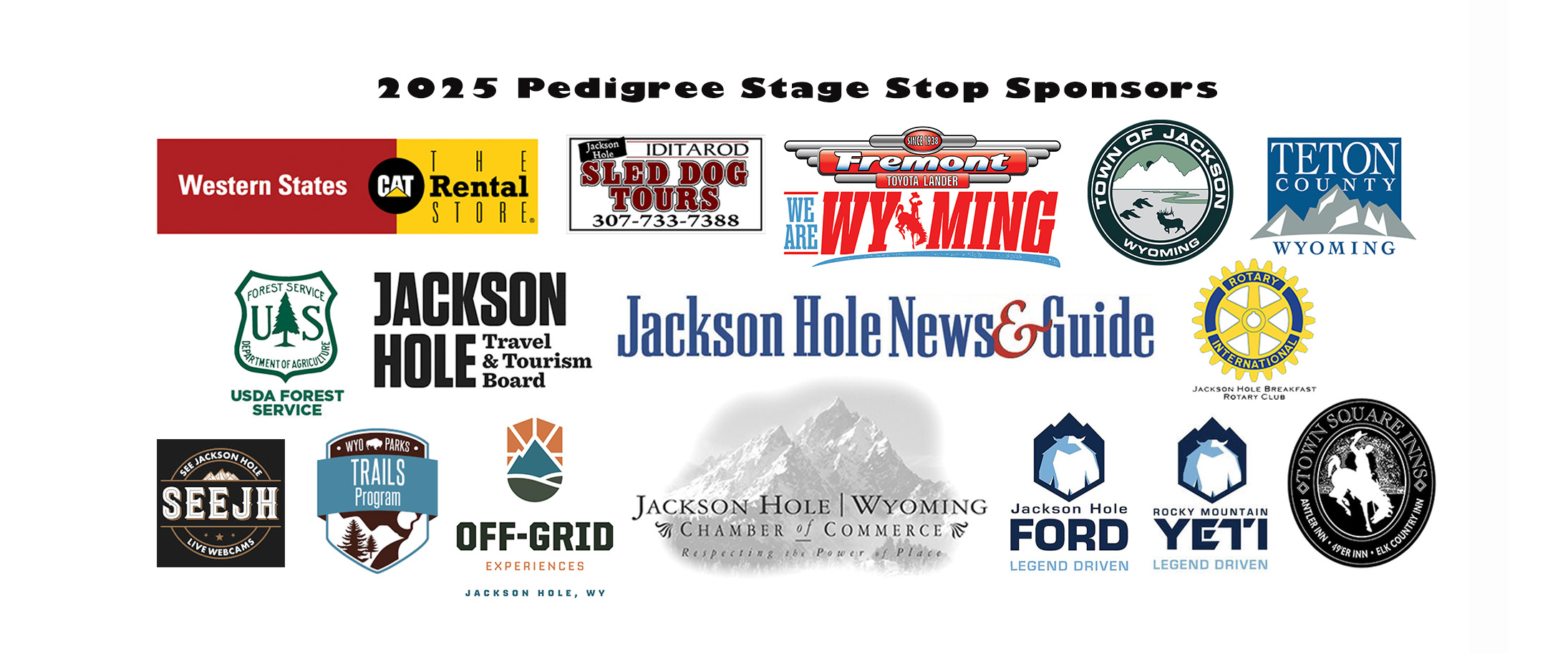By Jerry Bath
With less than a month to go, preparations for the 2019 Pedigree Stage Stop Race are well under way. Mushers are training their teams, making plans and adjustments, and traveling to Wyoming for this year’s event. In this post, I will answer a few common questions that fans may have leading up to the race.
How far do they drive to get here? Jeff Conn travels the farthest with 2,600 miles from his home in Alaska. Alix Crittenden of Bondurant, WY is the closest with just 40 miles. Our mushers travel an average distance of 1,104 miles one way to compete.
How much does it cost to run the Pedigree Stage Stop Race? Costs including entry fees, fuel, lodging, and meals can vary greatly. Taking into account that several mushers come to acclimate from a few weeks to a few days before the race starts, I’d estimate an average cost of $3,700. But from my experience, I know this could be done much cheaper.
What goes into training? Well, this is probably one of most asked questions by fans and mushers alike. It all starts when the weather begins to cool a bit, anywhere from late August to early October. Some start with a free running program. Others have exercise wheels (a modified hot walker of sorts as used for horses), or hook them up to an ATV or truck. Training starts with just a few miles at a time, working up to a comfortable race distance. Too much of an increase too soon can slow a team down. This year it should be much easier to train than in the past due to the distances of each stage being 30 to 35 miles instead of the usual 50+ miles a day. Always, keeping the team’s spirits high is very important! Keep in mind, all of these adjustments are very weather-dependent. Just because it’s wintertime doesn’t mean the conditions are ideal for training. Conditions can range from -40F and icy trails to 60F and slush in the same week in some areas.
The amount of time devoted to training also varies greatly as some mushers work full time. Others work seasonally and can devote more time when it’s needed. We have a few that have tour kennels as their sole source of income and this can be a double-edged sword. You have to try and find the time to train a race team by not taking away from your busy season.
No one has a perfect training year. Mother Nature and life are always changing things up!
How many dogs does a musher have? This can play a small part in a competitive team. Race kennels in this year’s race range from 14 to 150. For most mushers not all dogs in a kennel are going to be on this year’s race team. Some are too young or just learning while others are on the retirement team. Some of us even have a house dog or two that were on previous race squads.
How will this year’s race be different from in the past? With the new changes in mileage and less than half the field being veterans to the Stage Stop we are entering into an uncharted era. As we previously discussed, the shorter stages potentially shorten the total time required for training, but we should see a much higher rate of speed. Most of the race newcomers are used to three-day races at best. Will they be able to be competitive for the entire 8 stages? With the increased MPH for the shorter distance, will the veteran finishers be able to hold on? Also the new changes from 16 to 14 total dogs and the daily allowance of dogs being dropped from 12 to 10 will likely change the strategy for most. More to come on these topics in future posts as I visit with a few more mushers.
